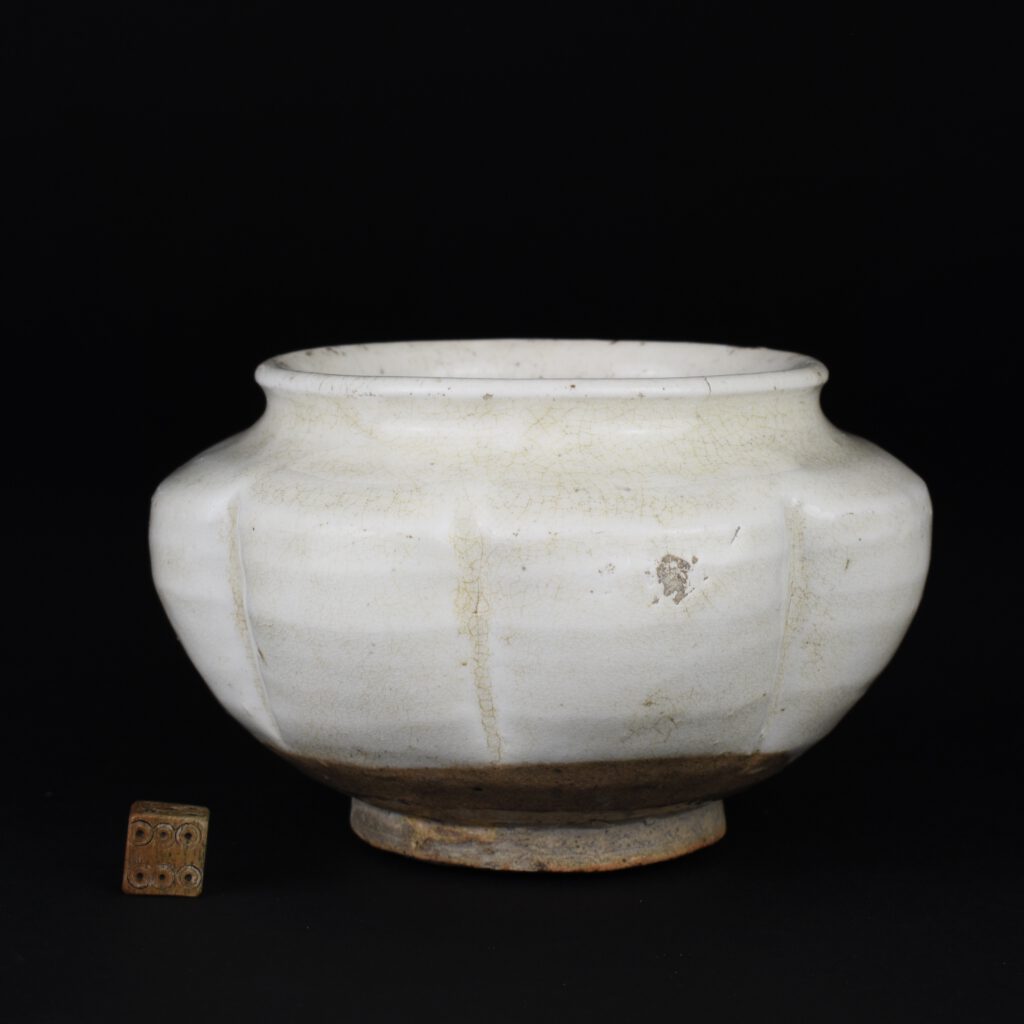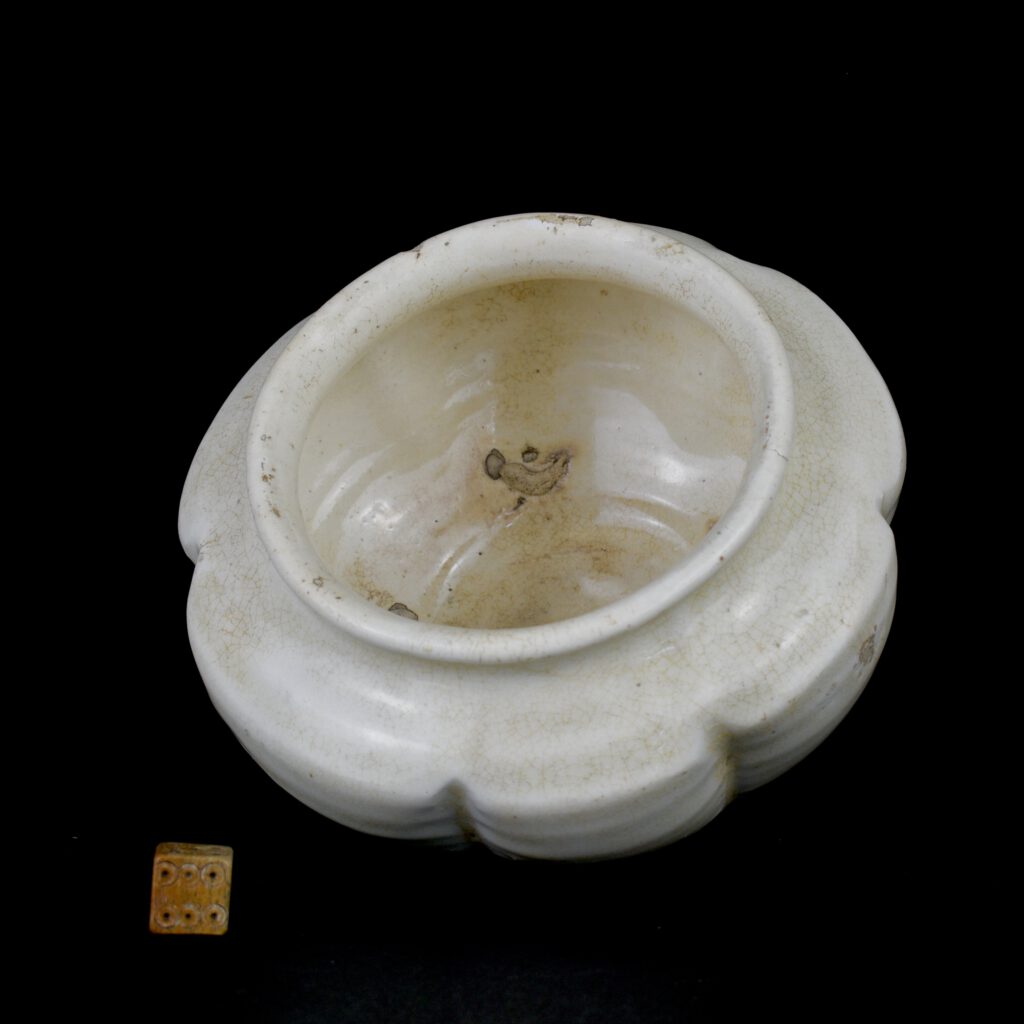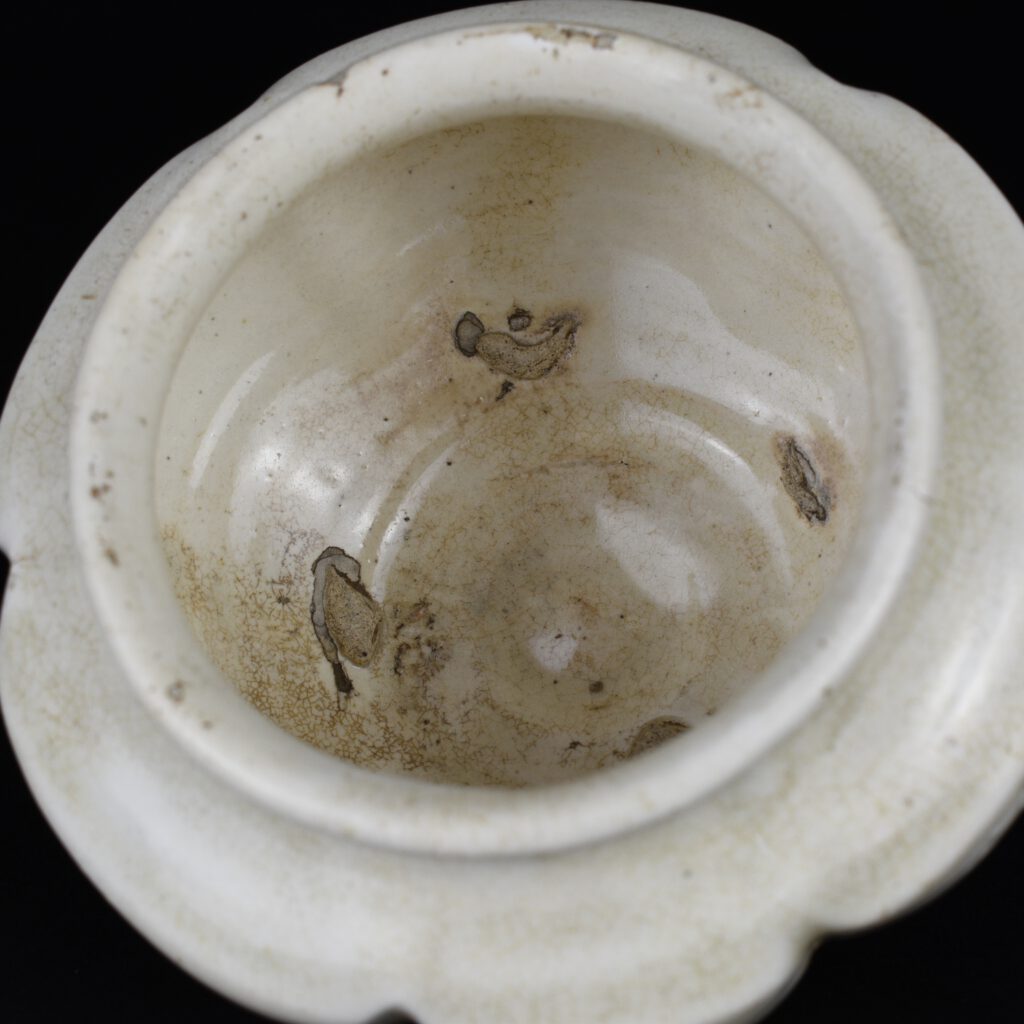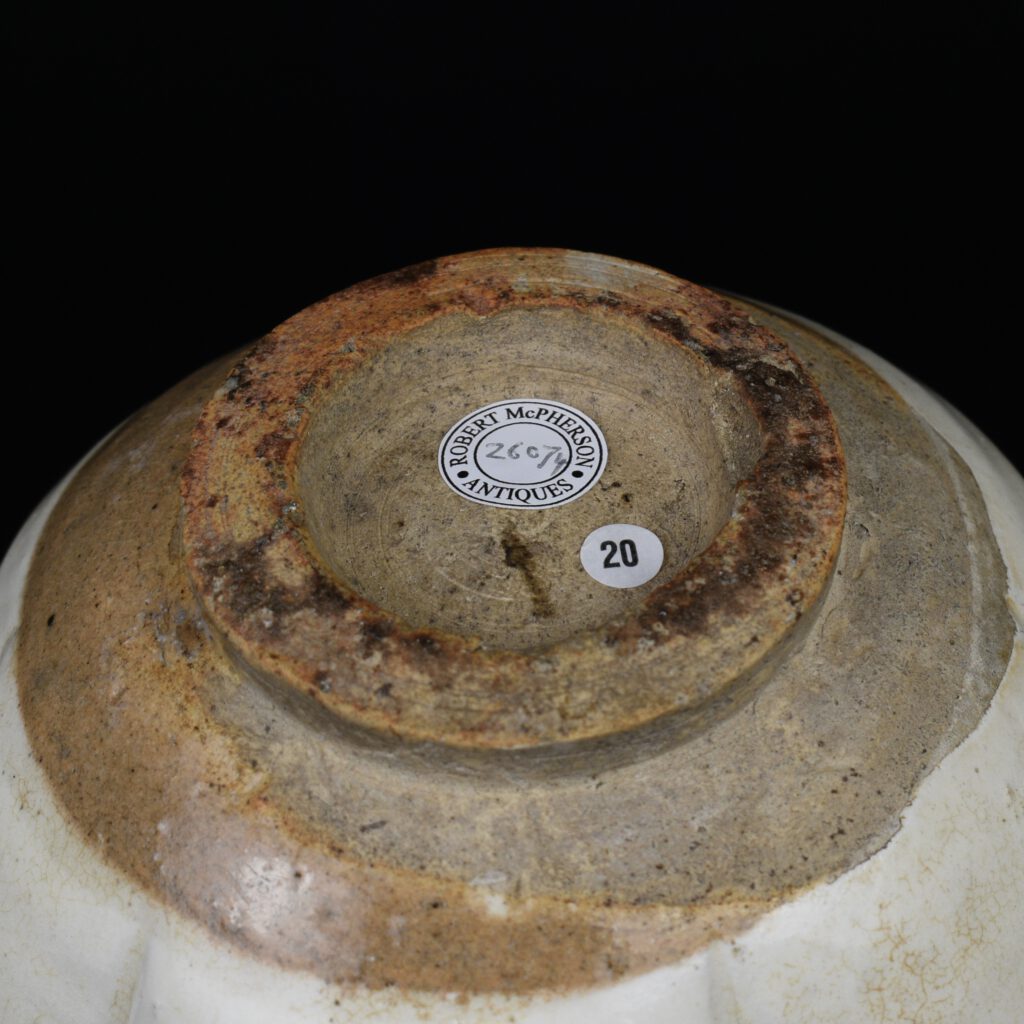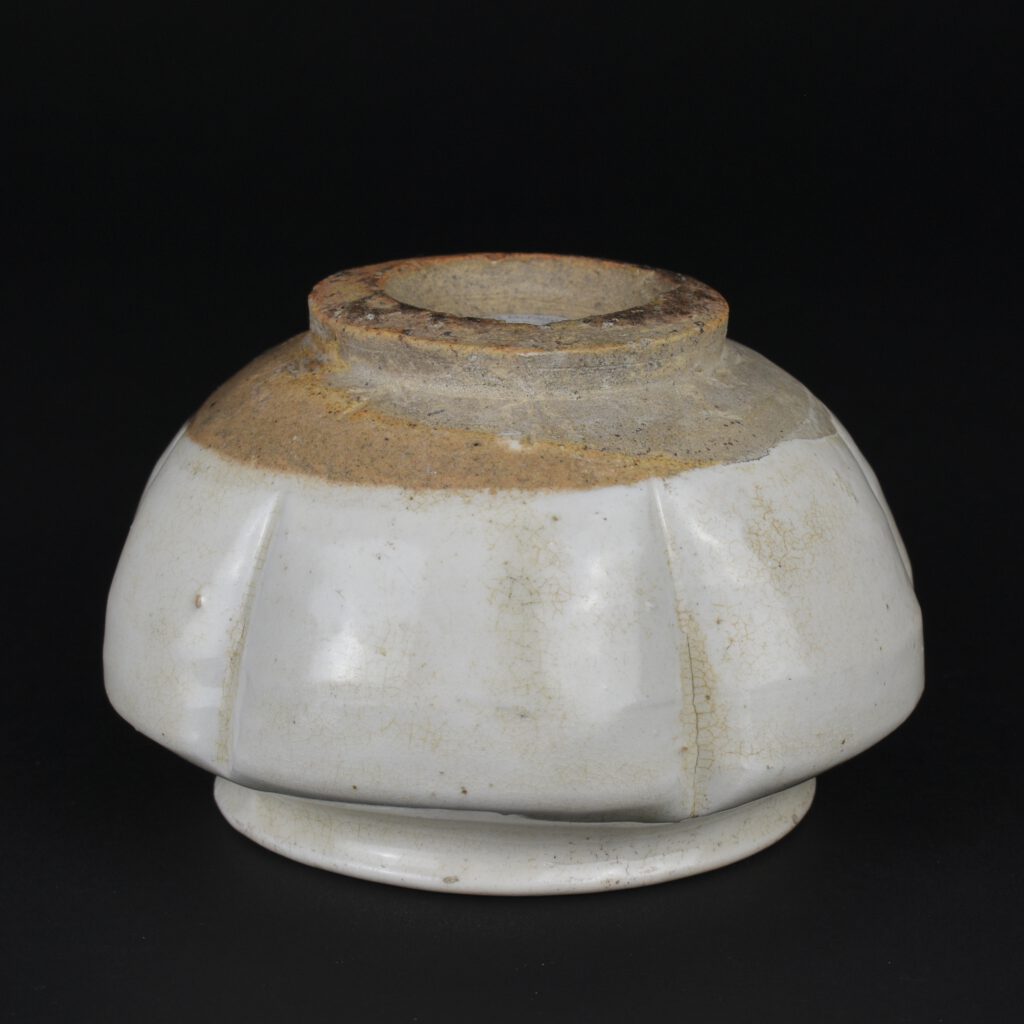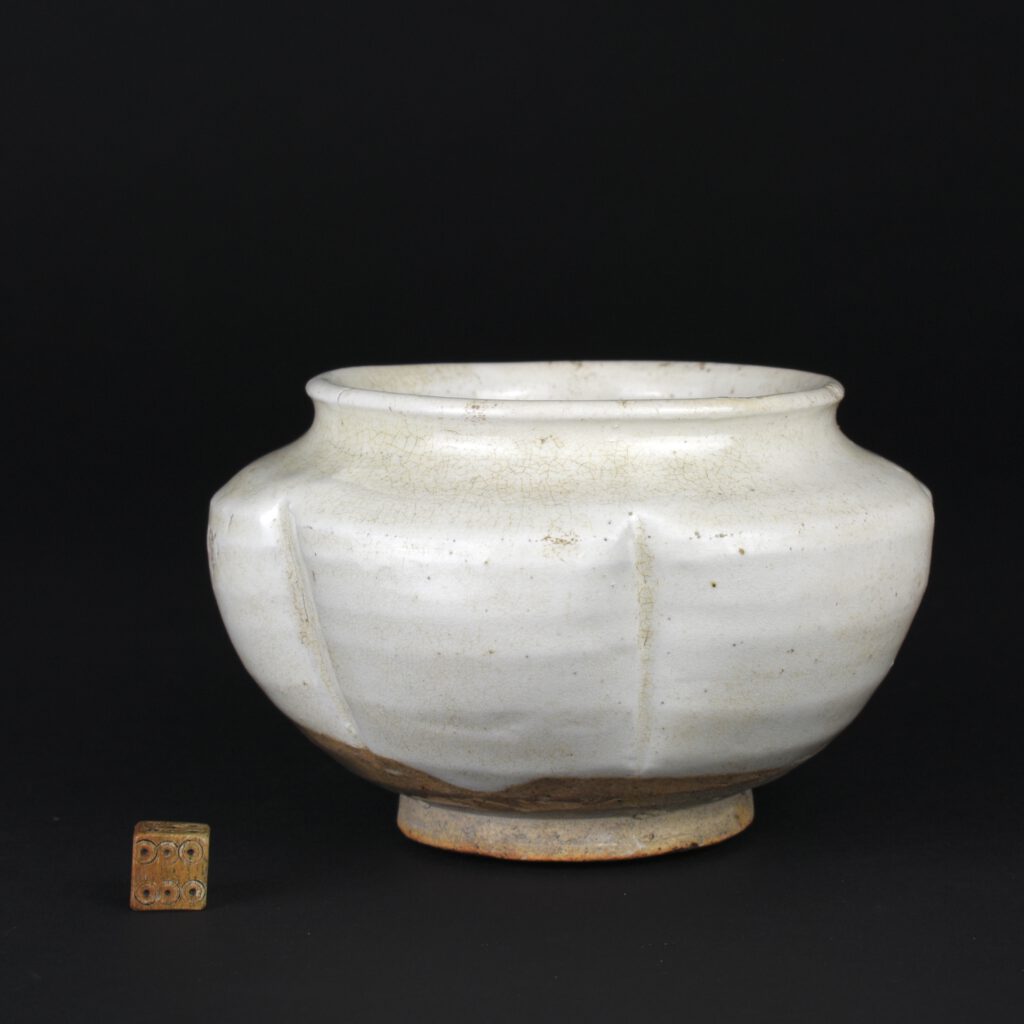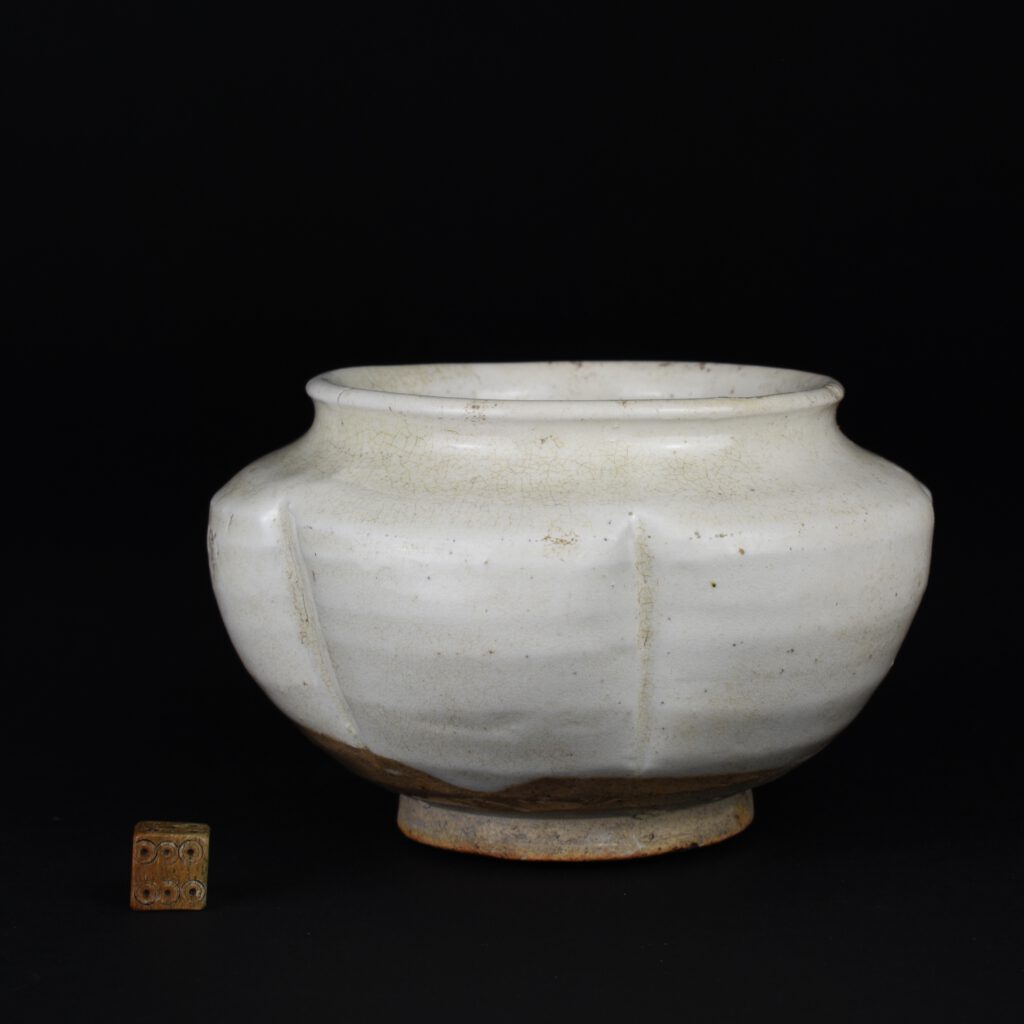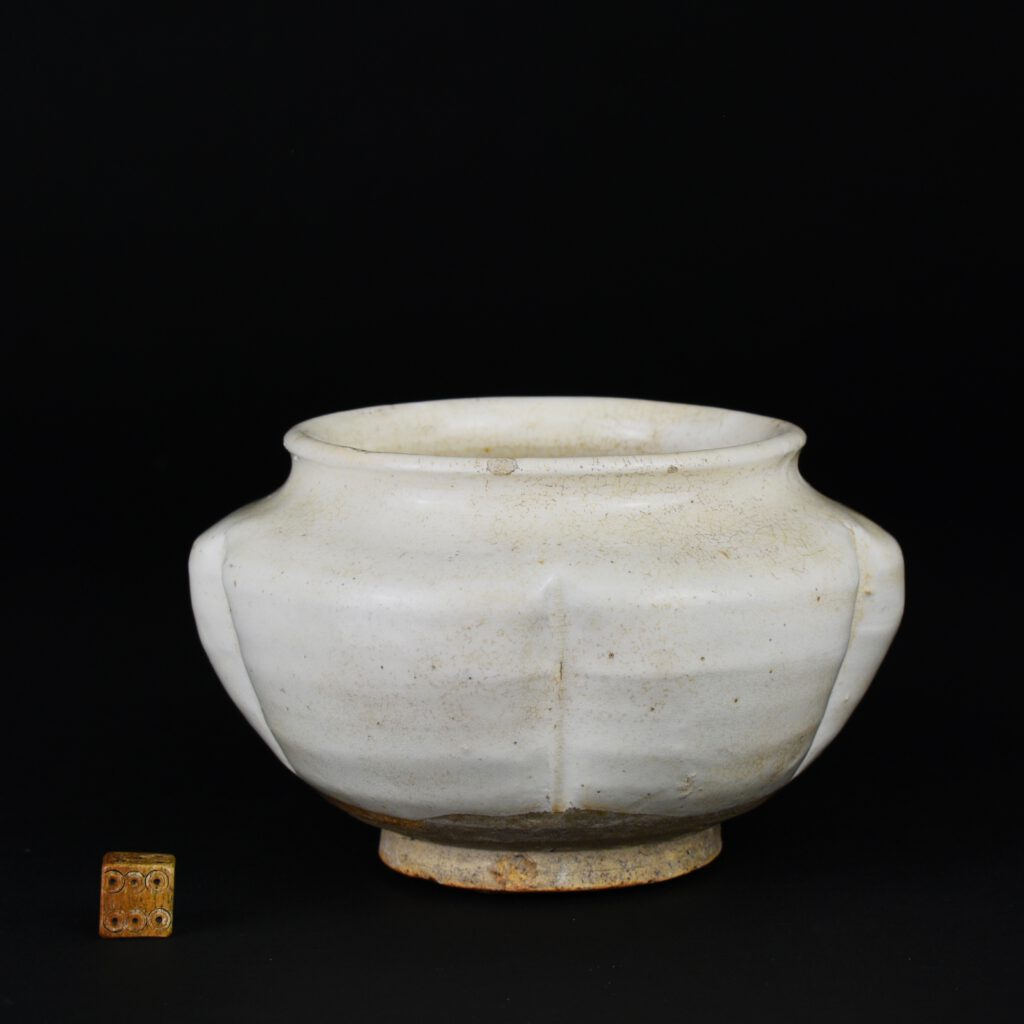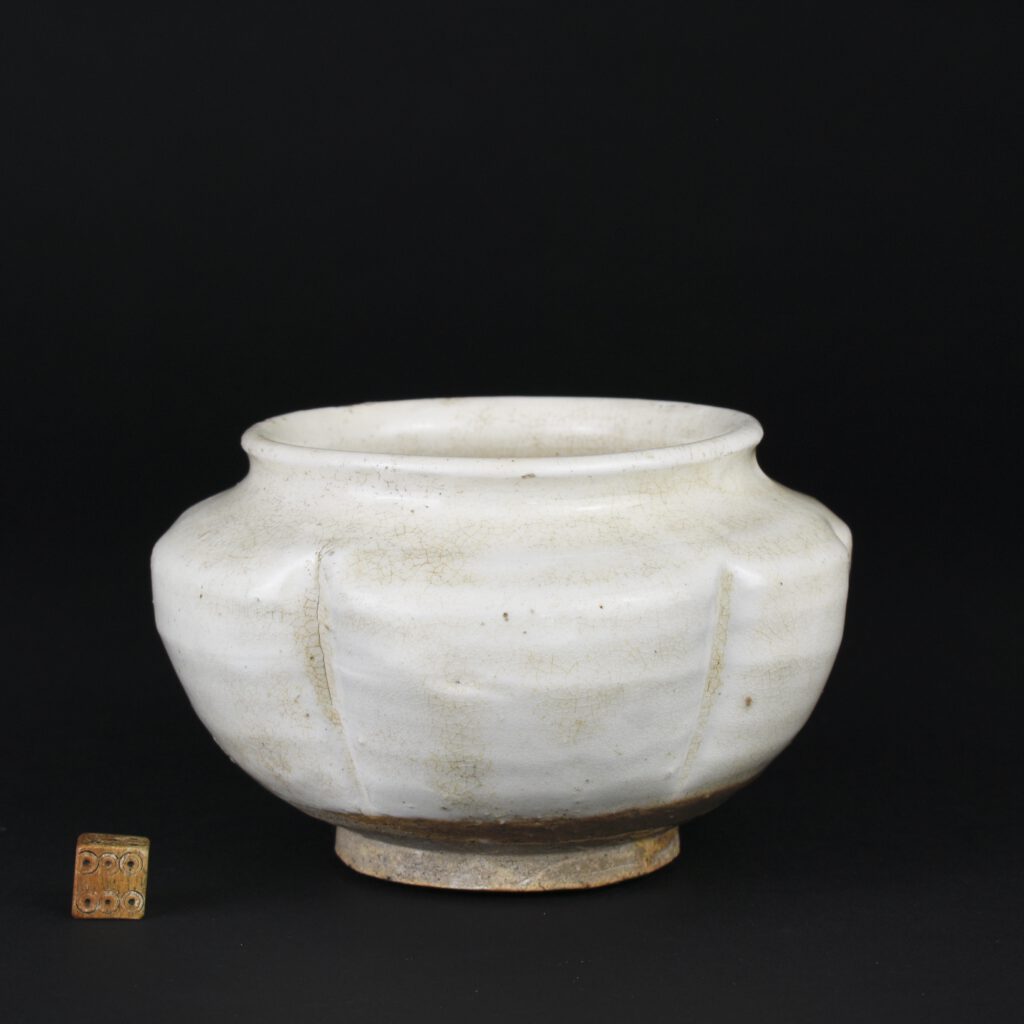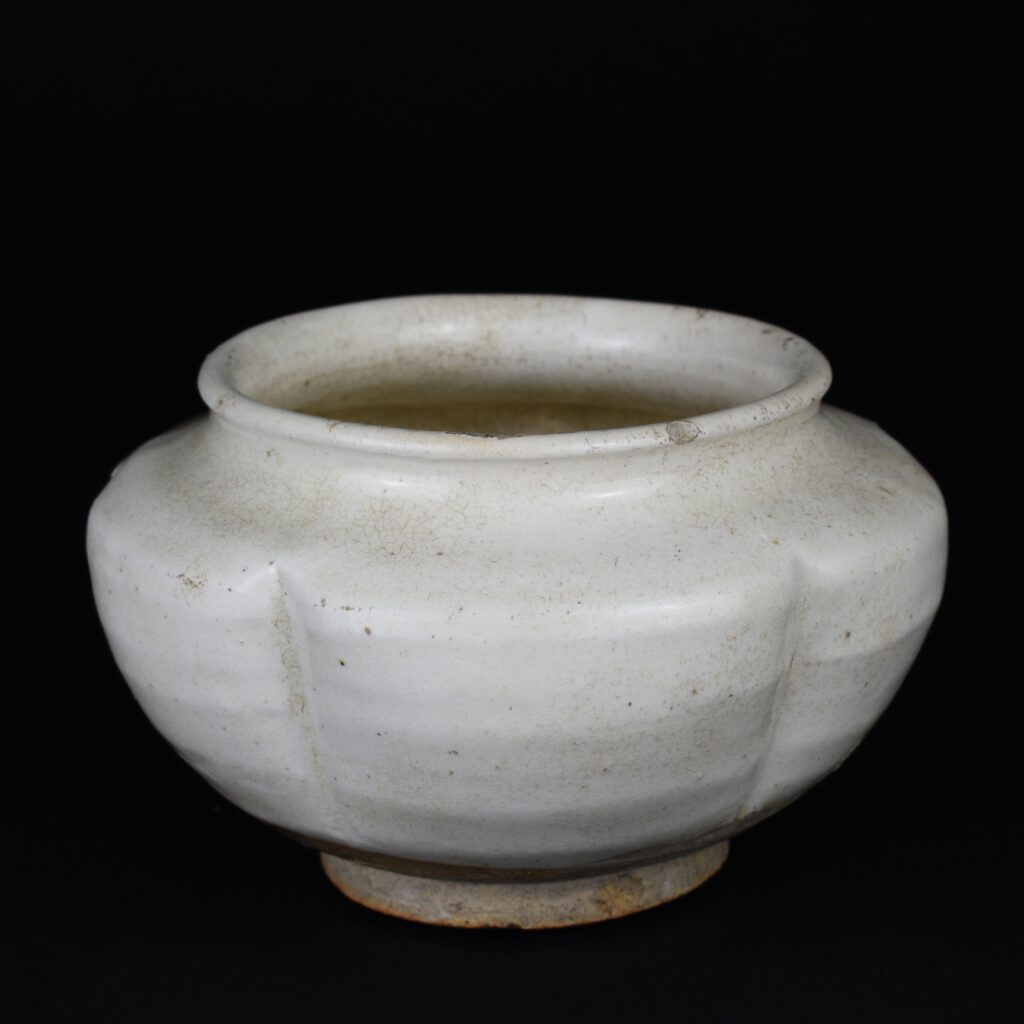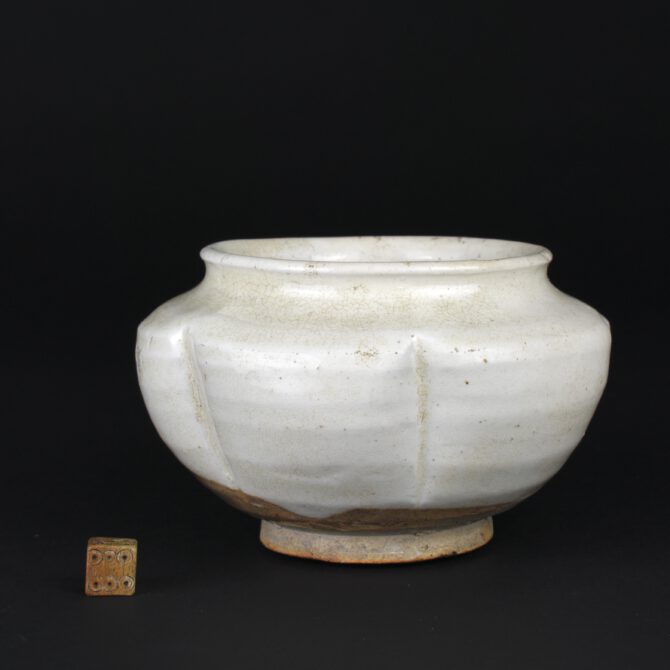
A Northern Song Cizhou Pottery Lobed Jar
A Northern Song Dynasty Cizhou Type Pottery jar c.11th Century, Cizhou kilns, probably Hebei Province. This lobbed Cizhou pottery jar is decorated with cream-coloured slip and a pale straw-coloured glaze, the shape was made by indenting the sides with a tool. The interior has four spur marks, this shows that another pot was placed inside this one. Space inside a kiln was precious and every inch counted.
SOLD
- Condition
- in good condition, small chips to the rim.
- Size
- Diameter 12.8 cm (5 inches)
- Provenance
- Stolk Collection, the Netherlands. Purchased from Paul Brandt, Amsterdam 1926 - 1984.
- Stock number
- 26074
Information
A Related Cizhou Type Stoneware Jar, Northern Song Dynasty 10th or 11th century.
Ex Collection of Nicholas de la Mare Thompson (1928-2010).
Robert McPherson Antiques - Sold Archive - 24888.
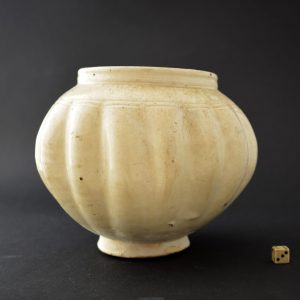
Cizhou Ware :
A freedom of expression exists in Cizhou ware that is unparalleled by other Song dynasty (960-1279) ceramics. This was a direct result of not being under the control of the court; consequently, the liberty to explore and experiment created an innovative range of designs full of flavour and life unique to Cizhou ware. The utilization of enamelled decorations in tones of vivid reds, yellows, and greens on occasional Cizhou pieces placed it centuries ahead of its time as this was not kosher for early court wares. The ware also displays an amazing dexterity in the sketchily incised patterns which have such a sense of carefree abandon that they appear impressionistic. Today, Cizhou ware is prized for its natural appearance which often reveals the potter’s process from the wheel’s rings, to the inner spur marks, to the unevenly glazed base.
The white stonewares of the Tang dynasty (618-906) produced two extremely influential wares; the first, Ding ware, became the official ware while the second, Cizhou, became the “popular ware” among the varying classes. It was Cizhou ware’s utilization by society that assured its continuance during political and dynastic changes which extinguished other Song wares; consequently, Cizhou ware is still produced today though the wares created during the Song dynasty are considered to possess an unrivalled spirit. Since Cizhou ware embodies a diverse range of wares not confined to a specific location, kiln complex, or style it is difficult to precisely define its characteristics.
The name Cizhou originated from the ancient area of Cizhou, encompassing a broad arc across China, which was first recorded during the Sui dynasty (581-618). However, the location constantly shifted and though the area of Cizhou is mentioned in the Tang dynasty (618-906) and Five Dynasties (906-960), each referred to an altered location.During the Song, Jin (1125-1234), Yuan (1279-1368), and partly into the Ming dynasties (1368-1644) the kiln areas of Cizhou were primarily concentrated in the northern provinces of Hebei, Henan, and Shaanxi. (By Mindy MacDonald).
